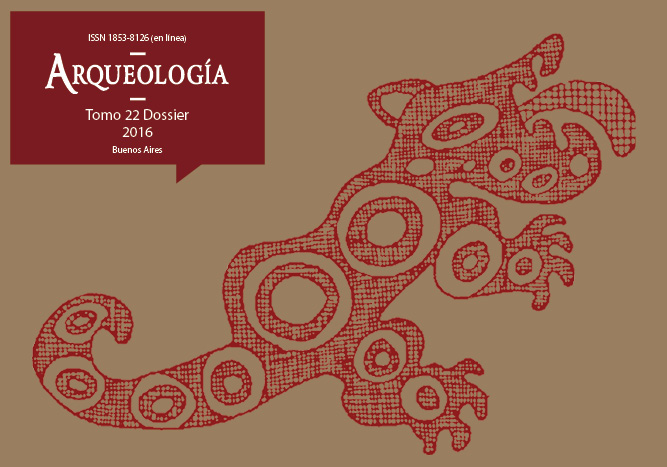Micromammals from the Cueva Galpón archaeological site (Río Negro, Argentina): Taphonomic issues and paleoenvironmental reconstruction during the late Holocene in Northeastern Patagonia
Keywords:
Rodents, Marsupials, Owl pellets, Sierra Colorada or Pailemán, Monte Desert
Abstract
Cueva Galpón is located in the Sierra Colorada or Pailemán, close to the eastern edge of the Somuncurá plateau. Radiocarbon dates situate the archaeological deposit within the Late Holocene, thus the assemblage provides a relevant record for inferring environmental change in the montane desert during the last 3,000 years. For this article, micromammalian bone accumulations from the archaeological sequence (NISP = 4.594 and MNI = 566) were studied. Preserved owl pellets and skeletal specimens with light digestive corrosion, suggest that the micromammal remains were mainly deposited by strigiform birds. Two marsupials, seven sigmodontines, and at least four caviomorph species were recorded. Two of them –Lestodelphys halli and Tympanoctomys kirchnerorum- are now no longer present in the area. The taxonomic composition of the studied sample suggests an ecotonal environment between the Patagonian steppe and montane desert. It is possible that at the time, temperatures would have been lower and precipitation slightly higher than at present. However, the lack of faunal elements typical of the Somuncurá plateau, such as abrotrichines or Euneomys petersoni, indicates that Late Holocene environmental fluctuations were not of sufficient magnitude to cause significant faunal changes.Downloads
Download data is not yet available.
How to Cite
Fernández, F. J., Teta, P., Mange, E., Prates, L., González Venanzi, L., & Pardiñas, U. F. J. (1). Micromammals from the Cueva Galpón archaeological site (Río Negro, Argentina): Taphonomic issues and paleoenvironmental reconstruction during the late Holocene in Northeastern Patagonia. Arqueología, 22(3), 105-124. https://doi.org/10.34096/arqueologia.t22.n0.3279
Section
Articles
Authors who publish in this journal agree to the following conditions:
- Authors retain copyright and yield to the journal right of first publication with the work registered with attribution license Creative Commons, which allows third parties to use the published always mentioning the authorship of the work and first publication in this magazine.
- Authors can make other independent and additional contractual arrangements for the non-exclusive distribution of the version of the article published in this issue (p. Eg., Inclusion in an institutional repository or publish it in a book), provided that clearly indicate that the work was published for the first time in this magazine.
- It allows and encourages the author / s to publish their work online (eg institutional or personal pages) before and during the process of revision and publication, as it can lead to productive exchanges and greater and more rapid dissemination of work published (See The Effect of Open Access).





(1)13.png)






1.jpg)
1.jpg)


13.png)
1.png)


(1)1.png)









